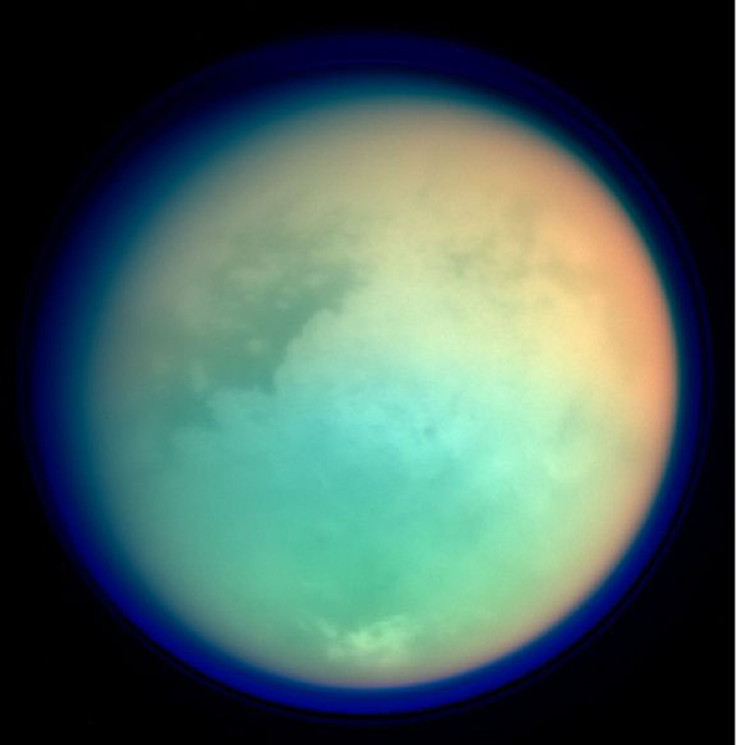Stunning Image Of Methane Rainfall On Saturn's Moon Titan Proves Changing Seasons [PHOTOS]

Saturn's largest moon Titan has experienced rainfall in its north pole, as evidenced by stunning images taken by NASA's Cassini spacecraft.
In a new study accepted for publication in Geophysical Research Letters, a journal of the American Geophysical Union, lead author Rajani Dhingra said that they were observing Titan's north pole for any sight of clouds and rains. These would apparently signal the beginning of the northern summer. However, they were not able to spot any clouds from the images taken of Saturn's moon.
"People called it the curious case of missing clouds." the PhD student in Physics at University of Idaho in Moscow said, Science Daily reported.
However, an image taken by the Cassini spacecraft's near-infrared instrument, the Visual and Infrared Mapping Spectrometer, on June 7, 2016 showed something new: a reflectve feature near Titan's north pole. Roughly half the size of the Great Lakes, the short-term reflective feature spread across 46,332 square miles and had never been seen in previous flybys of the Cassini.
Dhingra and her colleagues said that this could be a result of sunlight reflecting off a wet surface. They believe methane rain may have fallen on the Saturn moon's surface and later evaporated.
"It's like looking at a sunlit wet sidewalk," Dhingra said.
According to the research's lead author, methane rain fell on a pebble-like surface, causing the liquid to settle in crevasses and gullies and producing an amorphous pattern. In contrast, rain that falls on smooth surfaces would usually gather in a relatively circular pattern.
The image provided first evidence that Titan's north pole had experienced summer rainfall. As for why a change in season on Titan is remarkable, one season on Saturn's largest moon lasts much longer than the four seasons we have yearly on Earth. Titan's summer, for example, could last around seven Earth years.
When Cassini first flew by Titan, it was during the southern summer, and it was able to capture images of clouds and rainfall in the southern hemisphere of the satellite. Scientists predicted that the same would happen in the northern hemisphere in the years culminating to the northern summer solstice in 2017. However, the cloud scientists expected did not appear in any of the subsequent flybys of Cassini.
Dhingra noted that this latest find from the Cassini image proves that though summer was a bit late, their theoretical climate models of Titan is still accurate. However, the Titan team will still need to figure out what caused the delay of summer in the northern hemisphere.
Dhingra will also be observing more reflective features or "wet sidewalks" in images taken of Titan to spot more occurrences of rainfall on Saturn's moon.
© Copyright IBTimes 2024. All rights reserved.





















